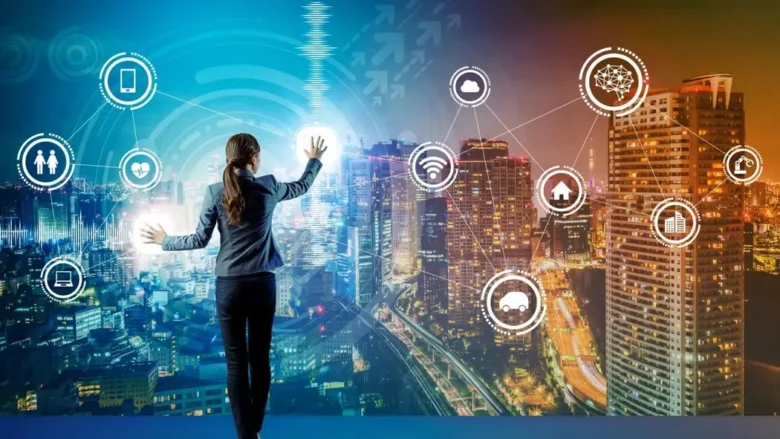Smart cities are one of the most compelling new concepts in urban planning and technology. As more people move to cities, they are leveraging technology to improve infrastructure, services, and quality of life. New smart city technologies are driving this shift, transforming urban lifestyles to become more efficient, sustainable, and connected. From intelligent transportation systems to digital governance, these new concepts are changing how people live in cities and how governments manage complex metropolitan areas.
The Role of the Internet of Things in Smart Cities
The Internet of Things (IoT) is at the heart of most smart city technologies. It connects devices, sensors, and systems, enabling them to share and collect data. By integrating IoT devices into traffic lights, public transportation, energy systems, and waste management, cities can function more intelligently. Smart trash cans, for instance, have the ability to send reminders when they require emptying, thereby saving both time and money. Real-time traffic monitoring can also reduce congestion by dynamically adjusting traffic lights. The IoT connects the physical and digital worlds, enabling cities to adapt to the needs of citizens and changing weather conditions.
Smart Transportation Solutions
Traffic is one of the greatest challenges for city dwellers, but smart city technologies help people travel more efficiently and environmentally friendly. Smart traffic management systems use information from cameras and sensors to improve traffic flow, reducing pollution and congestion. Mobile apps that provide real-time information about the arrival of buses or trains improve public transport and make commuting more predictable. Charging stations for electric vehicles and car-sharing apps are also changing the way people move around cities. In the near future, smart infrastructure will power self-driving cars, which will have a significant impact on urban mobility.
Smart Grids and Energy Efficiency
Energy is an essential part of city life, and new technologies make it easier for people to use it in a more environmentally friendly way. Smart grids aim to provide electricity anytime and anywhere, reducing energy waste and ensuring a constant supply. Renewable energy sources like solar and wind power are constantly upgrading these grids, resulting in a cleaner and more sustainable energy system. Smart meters in homes and businesses provide real-time insight into energy consumption, helping them save money and reduce their environmental impact. Smart technology can help people reduce their energy consumption while ensuring safety. Streetlights, for example, use less energy and adjust their output based on traffic conditions in their vicinity.
Digital Governance and Citizen Participation
Smart cities aren’t just about buildings; they’re also about making government systems more open and accessible. Digital platforms make it easier for people to access government services, such as paying bills, obtaining permits, or reporting issues like broken streetlights or potholes. Mobile apps and internet portals make it easier for people to participate in civic activities, allowing them to express their opinions and make decisions. Open data initiatives make government data publicly accessible, increasing transparency and accountability. These systems make government more efficient and promote better communication between citizens and city officials.
Smart Healthcare in Cities
Healthcare is a vital part of urban life, and new technologies are making it easier for people to access and manage their health. Telemedicine platforms allow people to communicate with doctors without having to visit in person, saving time and reducing the burden on healthcare facilities. Wearable health devices can track vital signs and send data to medical experts, enabling early detection of problems. Automated systems and AI-driven diagnostics are making smart hospitals commonplace in cities. By integrating healthcare into the smart city ecosystem, care can be easier, faster, and more tailored to everyone’s needs.
Safety and Security in Smart Cities
Safety should be a top priority in every community, and smart technology offers new ways to ensure this. Smart surveillance systems use artificial intelligence to detect unusual behavior and immediately alert police, preventing crime and getting help faster. Emergency response systems use information from various sources to plan responses to natural disasters or accidents. Smart streetlights not only consume less energy but also make cities more recognizable, improving safety. As cities increasingly embrace connected technologies, cybersecurity becomes more important, and therefore protecting cities from digital threats becomes even more crucial.
The Future of Living in a Smart City
The technologies that enable smart cities are still evolving and offer enormous potential for the future. With the continued advancement of artificial intelligence, cities will be able to proactively identify problems and provide solutions. The addition of 5G networks will further improve connectivity, making real-time communication between devices easier and more reliable. Infrastructure is crucial in future smart cities, but equally important is their ability to create livable, sustainable environments that are accessible to everyone. By applying these new concepts, cities have the potential to become hubs of efficiency, sustainability, and opportunity.
Conclusion
New smart city technologies are changing the way people live in cities, making them more connected, more efficient, and more responsive to residents’ needs. These new technologies are transforming every aspect of urban life, from intelligent transportation and energy systems to digital government and healthcare. While concerns about privacy, security, and equal access remain, the potential benefits far outweigh the risks. Smart cities are becoming increasingly common, meaning they will become greener and more welcoming for everyone. They will improve quality of life while accommodating larger populations. The new technologies currently under development will shape the cities of the future.
FAQs
1. What does a smart city mean?
Smart cities use technology, data, and connected systems to improve citizens’ lives by enhancing infrastructure, services, and quality of life.
2. What does the Internet of Things do for smart cities?
The Internet of Things connects sensors and devices in a city, allowing them to collect and exchange data. This makes transportation, electricity, waste management, and other services more efficient.
3. Which technologies make cities smarter?
Intelligent transportation systems, smart grids, telemedicine platforms, environmental sensors, and digital government applications are some examples.
4. Are smart cities safe?
Smart cities use technologies like AI-powered monitoring and emergency response systems to improve safety, but they also pose cybersecurity challenges.
5. What will the smart city of the future look like?
In the future, smart cities will increasingly utilize AI, 5G networks, renewable energy, and inclusive governance systems. These will make the places where people live and work more sustainable and livable.




